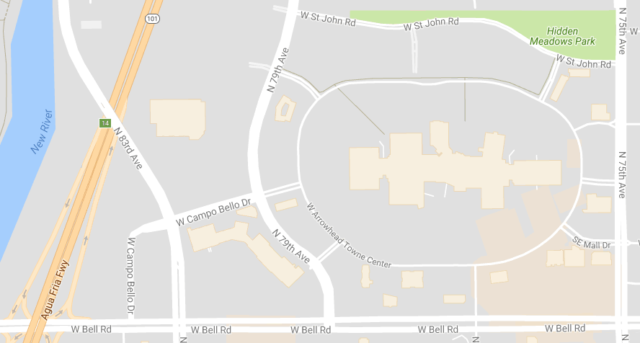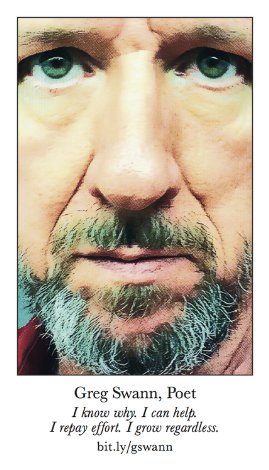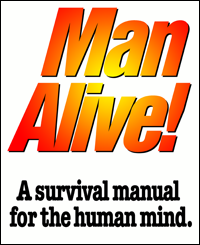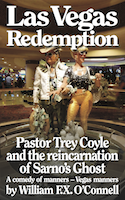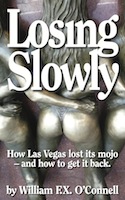It’s not hard to see why: It’s so easy to stay home, even as it is seems every day riskier to venture out.
Amazon will bring you all the gear you could buy at retail, including the TV and films to replace the cinema. When you do go out, you drive to a guarded lot, or you valet, or you just taxi door-to-door. You can even work from home.
Meanwhile, depending on where you live, chaos reigns on “public property.” Little things turn into big things, so, while most of us are still and always sane, random insanity happens – and so does its intentional mimicry. Where no one keeps the peace, the peace is steadily less kept.
Even if it were, vacancy repels: Nothing draws a crowd like a crowd, but nothing is quite as spooky as dropping a coin or your keys into a vast, cavernous, echoing silence.
People vote with their feet – and they’re voting to stay home.
That’s only a problem if you need for them to vote some other way. I’m a natural-born home-body – really a work-body – so I couldn’t love these changes more. In the course of my lifetime, the world at large has come, more and more, to resemble the one I’ve lived in all along. It will be a very happy day for me when I know I will never have to walk into a Safeway ever again.
But considered as a real estate problem, it’s a catastrophe: Public-facing commercial space of all sorts is flailing, but the investment value of the residential dirt around it is affected, as well. We built for cars, so the homes we don’t venture from make less and less sense.
But I’ve thought that way all along. We’re talking about high-density development, so you know, but I’ve been talking about this since I was a teenager. I had a class in the history of New York City, and our final project was to propose a change to the city that would be as consequential as the Adirondacks or glaciation or industrialization or Robert Moses.
My plan was to rebuild the Long Island Expressway as an eastward-extending linear skyscraper platform, a structure-of-structures anchored in the moraine: Heavy rail, passenger rail, freeway, miles of pedestrian shopping mall, all topped by a linear park peppered with individual towers: Residences, offices, hotels, schools, even light industry. You can live, work, shop, play and study all in the same place, with zero need for a car – or even an overcoat! – if you don’t want one.
I build these things in my head everywhere I go: Boston made me crazy because there’s so little dirt and so much that could be done with it. I desperately wanted to show Phoenix how to get an actual working downtown – by keeping the blistering outdoors out of it. And I’ve described huge refurbs for Las Vegas.
No one builds this way, of course. It could be what I want is too big for anyone. And even ignoring all the legal niceties that would go into being the master-lessor for what amounts to a whole town, the regulatory red tape would be a nightmare.
Where might that problem be solved? Down at the mall, of course.
A regional mall is 100-200 acres of contiguous, privately-owned dirt. Good services and freeway access, already, obviously, and all of that can be made better as we rebuild everything else. And the way to think of this is to build India-style, with the super-structure itself taking primary responsibility for its own power, water and sewage needs, with extant services as fallbacks.
I have a location in mind, of course: The Arrowhead Towne Center in Glendale, AZ, the mall nearest my home and the setting for the Traindancing stories. Excellent freeway access and New River – a dry river bed – right next door for utilities spaces.
We can turn the Towne Center into a real town – expressed as commercial real estate. In the long run, we can expect to take all the land from 75th Avenue west to the river, from Bell Road north to St. John Road, but for now let’s just demo the existing mall and plop our first structure-of-structures down in the middle.
Call it 1,000 feet square, and maybe 300 feet tall, from basement to sky.
Starting well underground, anchored in the granite, is parking, accessways and utilities spaces. The parking here can offer access to all publicly-available spaces, with other levels of parking set aside for the private towers perched atop this giant concrete block. That way, you can secure from the street, but also build in further layers of security for more-private spaces.
Above that, at grade level, is the mall, a million square feet of it – per level.
Why is the mall dying? Because you have to drive there, and that’s a hassle, plus it’s not as safe as it used to be – and Amazon delivers.
But if people start, end and spend their days already at the mall, Amazon’s advantages wither, supplanted by the experience software can’t match: Actual see-me-feel-me-touch-me-heal-me shopping.
This is the way cities were meant to be built, before they were ruined by government. You know. With people in them.
So above the high-end retail, picture a level of more-pedestrian retail – grocery, drug, office supply and hardware stores, plus perhaps, also, churches, schools and cinemas. We have at least 50,000 people living overhead, with another 50,000 coming and going every day for work. We can support all the retail you would have expected in the downtown shopping district of a mid-sized town in 1950 or so.
Yes, some people are going to shop mostly online from now on – some to save money, some to save time – but their orders can be fulfilled by foot-messenger from the stores beneath their condominiums.
Big structures sacrifice both ornamental beauty and fenestration, but they gain hugely in flexibility. In the mall world, spaces are meant to expand and contract as needed, and everything in the mega-structure can be built that way – constructed to be repurposed as demand changes. In this way, each commercial level within this giant building can be thought of as grade-level dirt, to be remodeled at the tenant’s will.
What’s above it all? A park, a million square feet of it, peppered with residential, hotel and office towers. You’re ten or twenty stories above the ground, up where the air is fresh and clean, and there are zero cars to impede your access – just people walking, some with baby-strollers.
If you live or work in one of the towers, you can go back inside that way. If not, there’s a wonderful sales office back in the mall. Would you care for some refreshments? 😉
Building the entire market into the market-space is the solution to all commercial real estate problems. This is what cities used to do, incidentally and accidentally, in consequence of high transportation costs – the relatively-limited range of feet. When Ford made horseshoes obsolete, we started spreading things out – particularly since building “free” roads for “the public” turned out to be so lucrative.
But building this way makes sense even in the wheeled world. The ideal form of human transportation is on foot, where that is possible, and managing exposure to the outdoors has been a human ideal since the very first snowstorm, I promise you.
If you and your family can walk almost everywhere you might need to go, you’ll have more time to spend together as a family. And if older or Special relatives must live apart from you, you’re close enough to visit as often as you want – with the mall and the park there to turn visits into outings.
What happens when we fill the mega-structure? Build another one, as many as will fit on the site. Redevelop the surrounding spaces with support services. For example, this is now a great place for a new hospital, isn’t it? Maybe an airstrip, too, built atop the river bed. As soon as we stop waiting for “free” benefits, we can pursue profit by getting things right, instead.
I’d love to see this done with America’s dying malls. I’d love to see it done with every empty Convention Center in every dead-end ‘downtown’ west of Saint Louis. I’d love to see it done with airports – every airport its own vibrant mini-city.
But I would really, really love to see it done with freeways. We build all “free” roads as stupidly as possible, but none so stupidly as freeways. We could rebuild freeways a mile at a time as linear mega-structures like the one I’m describing here, and in due course we could house the entire population of the earth on land that is now being hugely wasted, leaving the rest of the planet to nature – and to nature-lovers.
“But I don’t want to live that way!” You don’t have to. A lot of people will, and there are advantages accruing to everyone from city life. Building big is a way to make it work.


